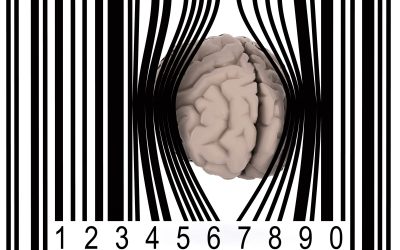As a business owner, your goal is to grow, and traditional marketers will tell you the best way to succeed is to use strategies that range from advertisements to brochures. Even in this digital age, many business owners think of marketing in a traditional sense: a website, signage, billboards, and commercials.
What if you could grow your business faster while only spending money on the tactics that enhance your bottom line? Speed is the key difference between growth marketing vs marketing. Instead of using the same sales cycle as always– sending an email, advertising online, using the same messaging and platforms– a growth marketing strategy keeps your marketing fresh. It tests content marketing, email marketing, and other digital tactics to ensure high-performance results. Growth marketing uses specific messaging, testing new channels, and fine-tuned target audience.
Take a deeper look into what it means to hire a growth marketing agency, and see how growth marketers can optimize your users’ experience–and how you can see massive growth fast.
How growth marketing goes beyond the top of the funnel marketing
As marketing technology has matured with available more data and automation tools, marketing strategy has changed. Sean Ellis, an entrepreneur, searching for a marketing hire to grow his user base as quickly as possible, coined the phrase “Growth hacking” in 2011 to describe how traditional marketing was transforming thanks to new technology, testing, user identification, and audience segmentation. Essentially, moving potential customers down the marketing funnel faster for a more engaged audience.
Setting up marketing funnels is one of the first pieces of the puzzle for digital marketing, including growth marketing services. The top of the funnel audience are users who have just discovered your business, are interested in services like yours, or have indicated some type of interest in what you have to offer. Traditional marketing focuses on the top of the funnel, while growth marketing focuses on the entire funnel and user engagement.
At its core, growth marketing is a data-driven strategy that has a bit of chaos and randomness in its process. Growth marketers take chances on new and unknown marketing tactics and use data to see if they work, can be tweaked to work better, or nixed completely. Growth marketing strategy uses these techniques through the entire funnel; it ensures the funnel is more actively engaged at a level closer to the bottom of the funnel –the portion of the audience closer to buying your product or service.
Main components of a growth marketing strategy
Growth marketing strategy keeps data-driven decision-making and continuous testing at its core. Growth marketers look at metrics like conversion rates, acquisition rates, retention rates, and customer lifetime value. A growth marketing agency uses several components in every strategy.
A/B Testing
A/B testing simply uses several iterations of the same ad, landing page, email blast, or social media post with minor changes in one pre-determined area to see which option resonates most with the audience. For example, you may send out an email with two different subject lines to identical segments to see which subject line has more opens.
Cross-Channel Marketing
Cross-channel marketing starts with understanding your user and how they prefer their communications from you and implementing messages through several channels (social media, email, SMS, etc.) according to these preferences.
Customer Lifecycle Metrics
Customers will go through many cycles, and growth marketing strategy takes advantage of their location on the lifecycle to keep them engaged with your business. There are three main customer lifecycle stages: activation, nurture, and reactivation. A good growth marketer will create messages and tactics to keep customers in the nurture stage.
How can growth marketing be implemented?
Growth marketing may sound complicated, but it’s simple to implement when you remember this acronym: AAARRR (sounds like pirate metrics, no?)
The term and meaning of AAARRR include:

- Awareness – the brand-building efforts to educate, entertain, and excite. These can include social media, SEO content, and content marketing.
- Acquisition – Generating leads. These include downloads, chatbots, and free trials.
- Activation – Getting people engaged in the product as quickly as possible. This includes onboarding, welcome emails, and encouraging users to invite friends.
- Revenue – Making your company money. This includes committing to a contract, upgrading a service, or purchasing a product.
- Retention – Keeping customers in love with your product. This includes sharing tips to optimise their experience and adding personalisation.
- Referral – Incentivising shares. This includes starting a referral or affiliate program. You can begin a growth marketing strategy by trying one tactic in each category and A/B testing; then, you can move on to different approaches.
Starting Your Growth Marketing Strategy
There are infinite combinations of platforms, testing, and metrics you can use for growth marketing, and your business will be unique. Hiring a growth marketing agency can give you a headstart for growth like you’ve never seen before in your business!




